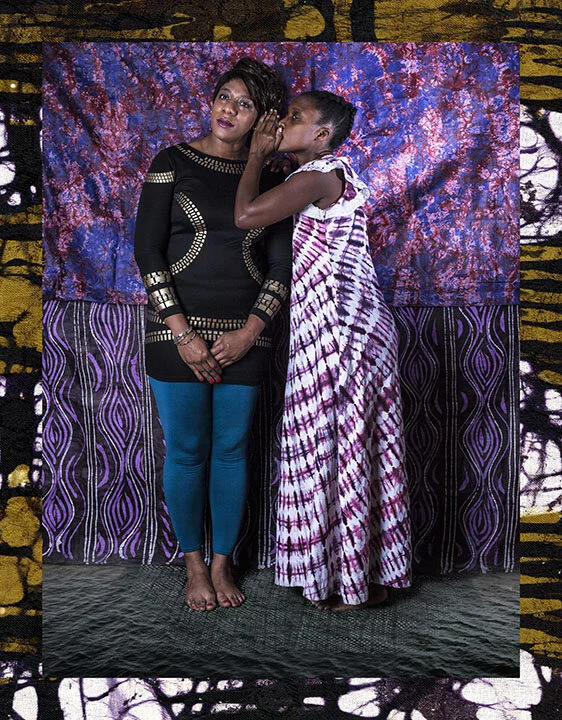Aligned With-Sodpet © Adama Delphine Fawundu
Adama Delphine Fawundu’s exhibition Sacred Star of Isis & Other Stories, on view at San Francisco’s Museum of the African Diaspora through November 15, probes the tensions that shape her personal and creative life. Raised with both her parents Mende and western cultural and spiritual values, her current project teases out how identity is shaped against complex and often distorted historical narratives.
Exhibition Review by Roula Seikaly
Passage Ways: 3 Traditions Spoken and Unspoken © Adama Delphine Fawundu
Through mixed media pieces incorporating hair, colorful batik fabric, shells, and photography Fawundu channels Mami Wata (Mother Water), a water spirit venerated in West, Central, and southern Africa and across the African Diaspora. The artist inhabits Mami Wata’s wide-ranging attributes - strength, sensuality, violence, destruction - in an attempt to understand how the transatlantic slave trade shaped the lives of those born of it.
In Black Like Blue in Argentina (2018), a seated Fawundu wears a mask and a pale blue gown, a sartorial combination of African and European influences. Her stillness suggests a quiet reckoning with that cultural collision and collective trauma as they shape diasporan experience. Aligned with Sodpet on the Underground Railroad (2017) again features the artist seated, this time dressed in a drape and skirt fashioned from synthetic human hair.
Both a socially reinforced beauty construct and, in the form of cornrows, a mapping system for runaway slaves, hair obscures the figure’s vision and identity in this composition. Who she is might be as much a question for her as it is for viewers. Fawundu, in the guise of Mami Wata, crafts a potent metaphor for comprehending whole-scale cultural erasure and historical violence committed against Africans, and how it may be tempered.
Black Like Blue in Argentina © Adama Delphine Fawundu
Sacred Star of Isis complements Africa State of Mind, an ambitious survey of contemporary African photography that unfolds over the second and third floors. Considerable thought as to staging, pacing, and signage for this exhibition is evident at every turn.
Unfortunately, the same cannot be said of Sacred Star. I’ve seen work successfully displayed in MoAD’s lobby, most recently Sadie Barnette’s Phone Home. But, this installation is lacking. Some of the unmounted images that are hung with magnets sag after nearly two months on view, which evokes a DIY aesthetic that is unbecoming of Fawundu’s accomplished work.
Additionally, some of the work hung on pillars opposite the small but respectable gift shop could be mistaken for poster reproductions of Fawundu’s work, not the actual photographs. Vibrant paint that intensifies the color-saturated compositions is supposed to connect the objects in the hallway and lobby, but fails. Overall, while the work is powerful, the installation and exhibition flow is choppy and inconsistent. I’d rather see this work installed at MoAD if and when a dedicated gallery is available, so as to fully appreciate its layers and nuances.



